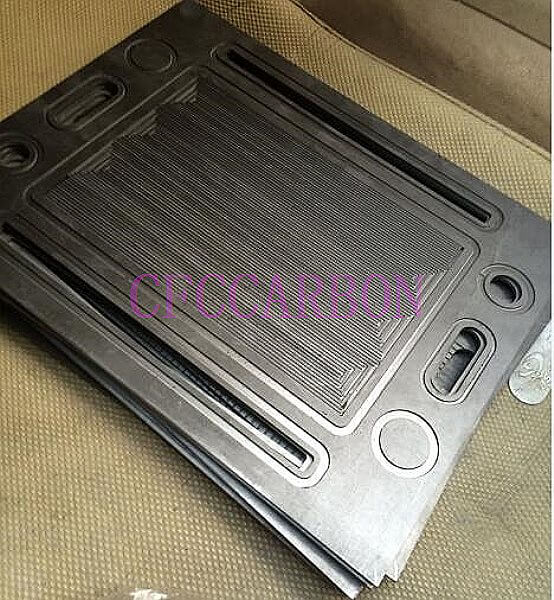Graphite bipolar plate is an important component of fuel cell. The graphite bipolar plates produced by our company have been sold overseas, with stable quality, relatively low prices, short delivery times, strict production and processing technology, strict tolerance control, and high processing accuracy.

graphite bipolar plates
The bipolar plate is an important performance element in the fuel cell stack, which plays the role of separating oxidant and reducing agent, collecting current, and gas reaction place. Bipolar plates are mainly divided into three types: metal bipolar plates, composite bipolar plates, and graphite bipolar plates. At present, graphite bipolar plates are mainly used in domestic stacks.
Graphite bipolar plate function:
(1) Separate oxidizer and reducing agent;
(2) It has the function of collecting current;
(3) There should be flow channels on both sides of the graphite bipolar plate to make the reaction gas evenly distributed;
(4) Ensure the uniform temperature distribution of the battery stack and achieve the heat dissipation effect.
Characteristics of graphite bipolar plates:
Graphite bipolar plates have the characteristics of small size, light weight, excellent performance, stable operation, low cost, high efficiency, long life, corrosion resistance, etc. Welcome to consult and order.
Classification of graphite bipolar plates:
Bipolar plate materials can be roughly divided into three categories: carbon materials, metal materials and composite materials of metal and carbon.
(1) Carbonaceous material. Carbon materials include graphite, molded carbon materials and expanded (flexible) graphite. The traditional bipolar plate uses dense graphite, which is machined into a gas flow channel. The graphite bipolar plate has stable chemical properties and low contact resistance with MEA.
(2) Metal materials. Metal materials such as aluminum, nickel, titanium and stainless steel can be used to make bipolar plates. Metal bipolar plates are easy to process, can be manufactured in batches, are low in cost, thin in thickness, and have high volume specific power and specific energy.
(3) Composite materials. If the contact resistance between the bipolar plate and the MEA is large, the polarization loss caused by the ohmic resistance is large, and the operating efficiency is reduced.
Among the commonly used bipolar plate materials, graphite materials have the smallest contact resistance. Non-conductive oxide films are formed on the surfaces of stainless steel and titanium to increase the contact resistance. Graphite bipolar plates have unique advantages and are increasingly used in many areas.